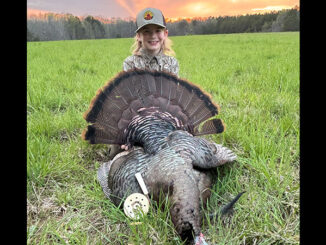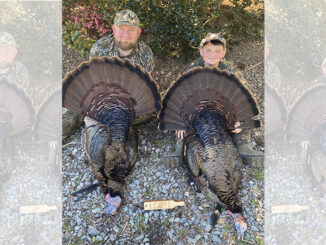
With a dearth of medium- to large-size striped bass remaining in John H. Kerr Reservoir (aka Buggs Island), many of the impoundment’s former striper anglers have turned to cat fishing.
Action has continued uninterrupted for them once they adapted to different tactics and techniques.
At 49,500 acres, Kerr Lake is filled with five species of catfish from gigantic blues and flatheads to smaller channel cats, bullheads and white catfish.
Many anglers target blue cats because getting bait is easy, and they come in sizes from small to huge (more than 100 pounds).
Marion F. “Ramrod” Hall, a guide who lives off Beaver Creek on the North Carolina side of the lake, once almost exclusively guided for stripers but now targets catfish for his clients. An outbreak of gill lice decimated Kerr’s striper population in recent years.
“The lake’s got catfish all over it,” said Hall (919-622-2796). “But I like to fish near Clarksville (Va.) because some of the biggest catfish come from there.”
Anglers can fish with hook and line, jugs or noodles. Cut bait is preferred by most blue-cat anglers. Hall only uses catfish bellies cut into 1-inch square chunks, while some people prefer panfish fillets. Flatheads, which also can approach 100 pounds, take live baits almost exclusively, particularly bream (which must be caught with hook and line and not netted). However, live baits can’t be used for jug or noodle fishing but can be used by hook-and-line anglers.
“Any place on the lake that has big flats near the (Dan or Staunton) river channels with about 30 feet of water is a good place to fish,” Hall said.
He prefers to drop baits on the east side of the lake near the Highway 58 auto and railroad bridges that cross Kerr Lake near Clarksville, Va., because that area has several expansive flats with the
proper depths.
“You also can find places like that in Nutbush Creek (the lake’s southern arm),” he said.
Hall said anglers should use their depth-finders to look for catfish flats.
“Any place that’s got underwater trees coming up from the bottom will be good, too,” he said. “If you can find trees, and your depth-finder also shows fish near the tops of them, that’ll usually be catfish. The biggest marks on a depth-finder now always will be catfish because the striper fishing’s just about gone.”
Hall said the general perception of catfish as bottom feeders is incorrect. He sets his baits to run from 10- to 25-feet deep as he drifts over 30-foot-deep flats.
“You might catch a channel cat on the bottom, but not blues or flatheads,” he said. “They’ll be suspended in open water near a creek or river channel, usually over some type of bottom structure.”
Tony Milam and Michael Reaves of South Boston, Va., caught the Virginia state-record blue catfish March 17 near where the Dan and Staunton rivers merge north of Clarksville, Va. That fish weighed 109 pounds.
Hall said he lost a similar-size blue cat near the same spot in 2010 after getting it to his boat. He estimated the fish would have weighed at least 100 pounds or more. It tore loose from his gaff.
“On a typical day, you can fill a 150-quart cooler with blue cats in three or four hours,” he said.
“That might take a dozen or so fish or only two or three, depending on their sizes.”
North Carolina and Virginia share reciprocal fishing license agreements, so licenses from either state are good anywhere on Kerr Lake.




